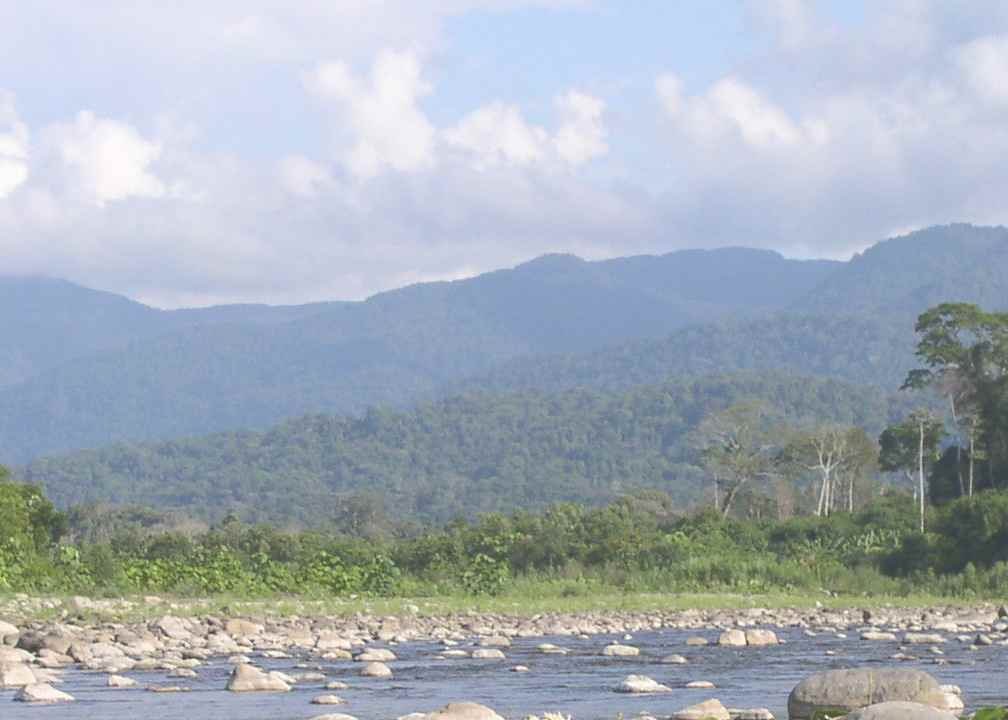
 Cabeceras Aid Project
Cabeceras Aid Project
 Cabeceras Aid Project
Cabeceras Aid ProjectDear Friends,
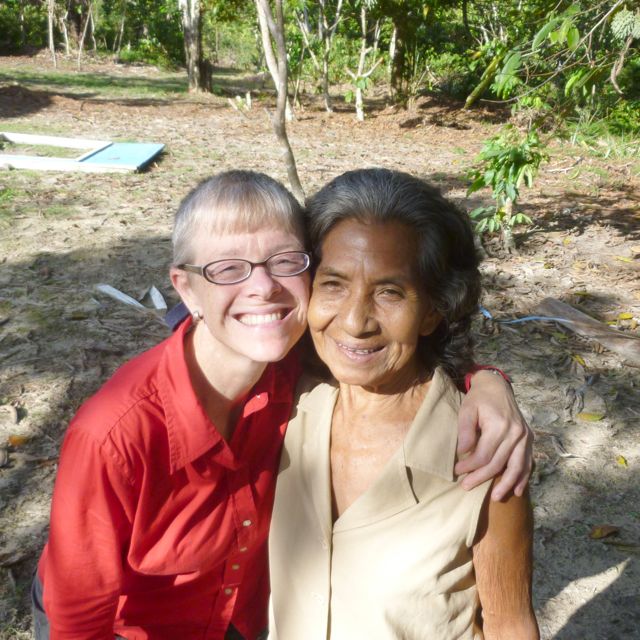 As always, it is an honor to write to you and bring you up to date on Cabeceras Aid Project's recent accomplishments and forthcoming activities.
As always, it is an honor to write to you and bring you up to date on Cabeceras Aid Project's recent accomplishments and forthcoming activities.
But before anything else, I would like to thank you for your ongoing support of our organization. Cabeceras is a small-scale organization, with clear goals and time-tested strategies that are brought to life by a small team of dedicated volunteers, using a small but carefully-spent budget. All of our work is heartfelt — as is our gratitude to every one of our donors and supporters. Thank you for being a part of Cabeceras!
![]()
Christine Beier
Fieldworker, Secretary, and Treasurer
P.S. That's me at right with my dear Iquito friend Ema; see below!
On overview of 2014
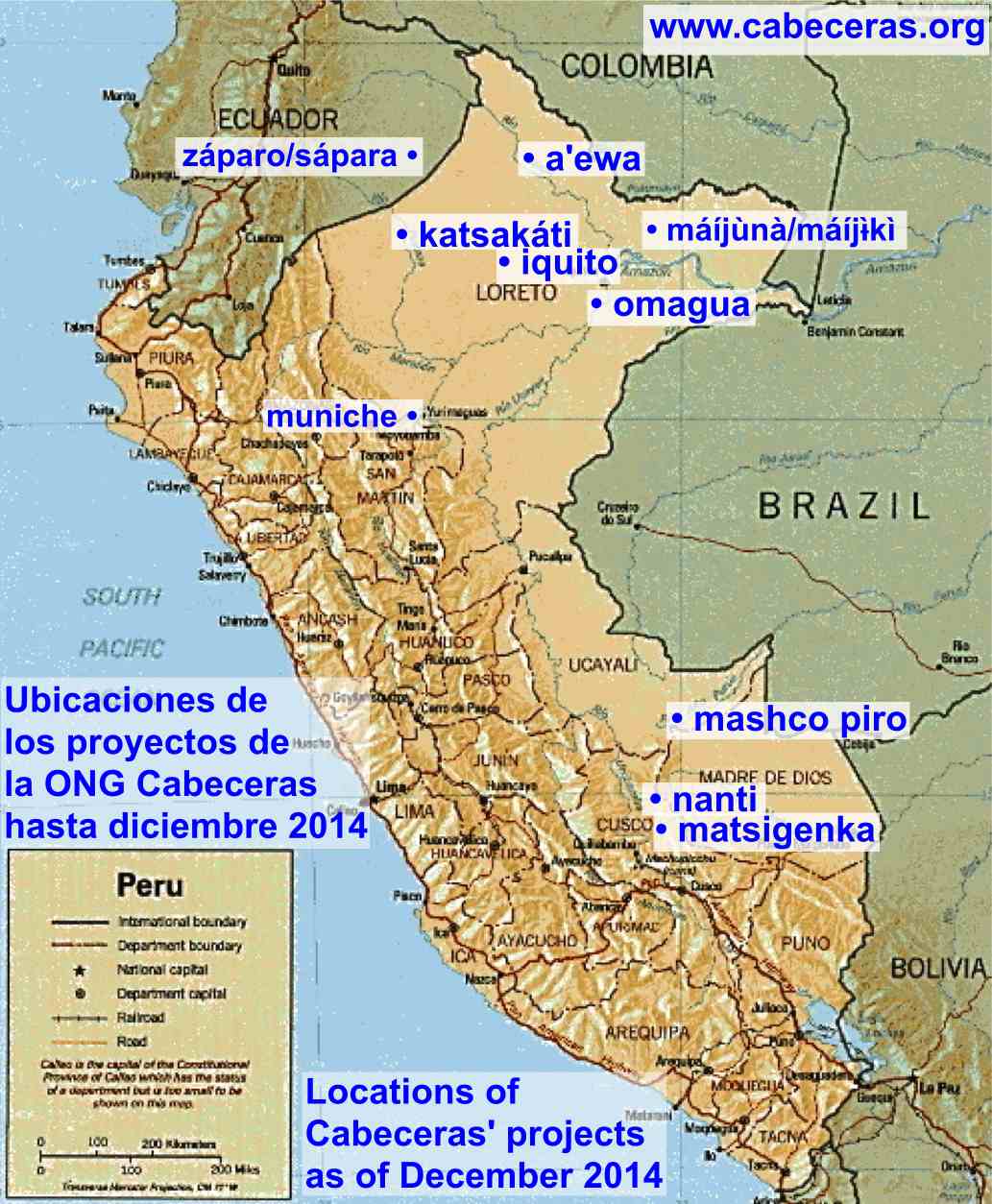 2014 was another productive year for Cabeceras, and included some exciting developments and successes. Read on to learn about the publication of a trilingual dictionary as one of the outcomes of the Záparo Rapid Documentation Project; our return to language documentation and revitalization work with the Iquito community of San Antonio; our production of two primers for use in schools in Máíhuna communities; our new collaboration with the Shipibo organization Kano Nete; and the continuing successes of our two current Nathaniel Gerhart Memorial Scholarship holders!
2014 was another productive year for Cabeceras, and included some exciting developments and successes. Read on to learn about the publication of a trilingual dictionary as one of the outcomes of the Záparo Rapid Documentation Project; our return to language documentation and revitalization work with the Iquito community of San Antonio; our production of two primers for use in schools in Máíhuna communities; our new collaboration with the Shipibo organization Kano Nete; and the continuing successes of our two current Nathaniel Gerhart Memorial Scholarship holders!
Publication of the Sápara–Spanish–Quichua Dictionary
In the spring of 2014, we completed the arduous task of preparing and publishing a trilingual Sápara–Spanish–Quichua dictionary, based on our collaborative fieldwork on the Záparo Rapid Documentation Project in 2011.
As you may recall, between December 2010 and August 2011 Lev and I were part of a team-based collaborative fieldwork project to document as much as we could of the Sápara language (also known as Záparo, but Sápara is the name preferred by the people themselves), a highly endangered language of the Eastern Ecuadorian Amazon. Sápara was once a major language in Eastern Ecuador and Northwestern Peru, but intensive intercultural contact led to the decimation of the Sápara people, as well as an abrupt break in language transmission between parents and children in the 1940s.
Lev and I were invited to work with the remaining rememberers of Sápara by Dr. Brenda Bowser, an ethnoarchaeologist who has worked with the Sápara people for many years. The goal of our project was to produce as much high quality language documentation materials as we could in a short, focused period. Our team also included Vivian Wauters, then a graduate student linguist at the University of California, Berkeley, and Julia Pichura Cuji, a young Sápara woman fluent in both Spanish and Quichua. The majority of the ZRDP was funded by a RAPID grant from the National Science Foundation (#BCS-1109101).
Based on our field research with four Sápara elders, and in response to the interests of the Sápara people and leaders who are the inheritors of this language, our team created a trilingual Sápara-Spanish-Quichua dictionary with about 1,100 unique entries, organized both alphabetically and in thematic categories. We chose a trilingual format because most Sápara people are native speakers of Quichua, and yet the dominant language in Ecuador is Spanish.
In May of 2014, our dictionary was published by Abya Yala Press in Quito, Ecuador (click here to see its webpage at Abya Yala Press, and click here to see a PDF of the manuscript itself). It is our hope that this dictionary will be very useful to school children and school teachers in the 14 small Sápara communities throughout Sápara territory. Copies are being distributed free of charge in Sápara communities, and all proceeds from sales will benefit the Sápara Nation.
The Iquito Language Documentation Project (ILDP)
In June and August, Lev and I had the great pleasure of returning to work on the Iquito Language Documentation Project (ILDP) in San Antonio de Pintuyacu, in Loreto, Peru. It is our goal to focus on this project through 2016, in order see the publication of our dictionary, a large text collection, and new pedagogical materials, as well as to help the community move further forward with language revalorization and revitalization activities.
As you may recall, in 2001 we began a long-term relationship with the Iquito people in order to do extensive language documentation and revitalization work with their heritage language. We worked intensively on the ILDP from 2002 through 2006, with the benefit of a major documentation grant from the Hans Rausing Endangered Language Programme (#MDP-0042), but by 2007 we felt compelled to take a break from that project to focus on some other equally urgent projects. In addition to two short visits in 2008 and 2009, we have kept in contact with the community since then through phone calls and correspondence. Gladly, now is the time for us to return our focus to the ILDP and bring to fruition much of the excellent work done by our project teams in previous years.
Lev and I returned to San Antonio in the summer of 2014, along with two graduate student linguists, Marcus Berger and Alison Zerbe, in order to re-invigorate our relationship with the community, re-negotiate another extended fieldwork period, and re-start our research activities with our beloved consultants. As a result of our successes, we rebuilt our language center in the village, giving us a place to live and work in future research visits; and we made a formal agreement with the leadership council to make multiple visits through August of 2016, leading up to the subsequent publication of the Iquito-Spanish dictionary, a substantial portion of the text collection, and additional pedagogical materials. All of this will be possible in part because Lev will have a sabbatical from teaching at the University of California in Berkeley during the 2015-2016 academic year.
Unfortunately, we didn't get the great news regarding the official Iquito orthography (writing system and alphabet) from the Ministries of Education and Culture that we got regarding the Máíhiki orthography (see below), and the orthography that we have been using since we began the ILDP has been replaced. Based on the decision of the Iquito community-at-large back in 2002, we agreed to prepare all of our materials on the language using the existing orthography originally designed by missionary linguists in the 1950s, which uses certain Spanish-based conventions ('qu' and 'c' instead of 'k'; and 'hu' instead of 'w'). The new official Iquito orthography uses 'k' and 'w'. The positive facet of this is that the new orthography is simpler to write. But the negative facets are practical ones: we will have to change all of our materials before publication, and everybody will have to learn a new way of writing Iquito. In case you're curious, the proper way to write the language name in the language itself is now: ikiitu.
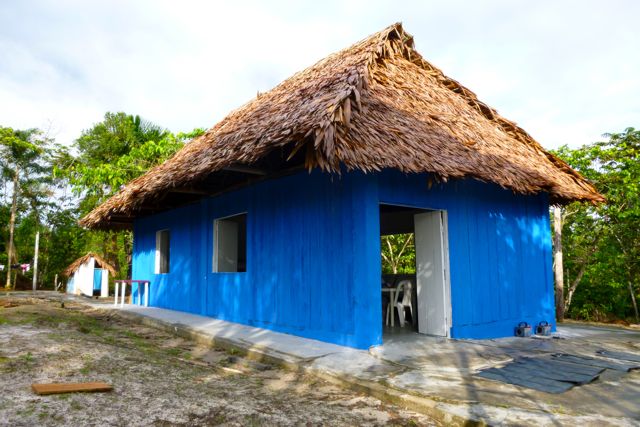 | 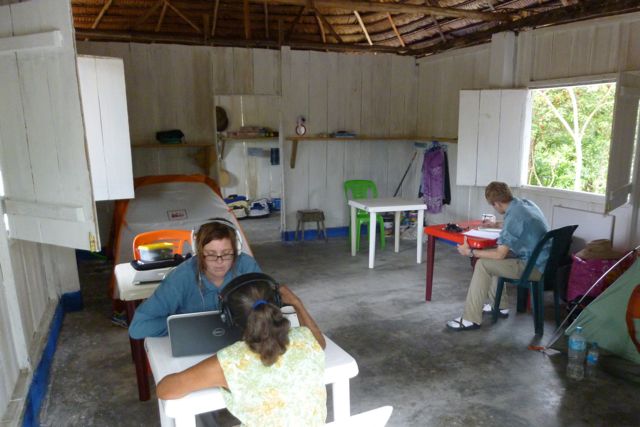 | 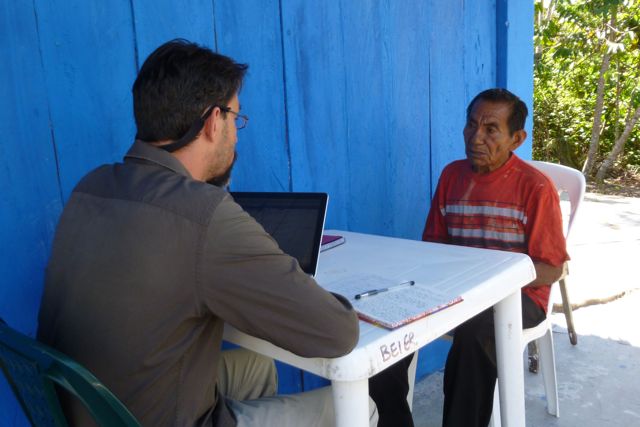 |
| Our renovated center in San Antonio. | Team members Alison and Marcus at work. | Lev working with Jaime Pacaya Inuma. |
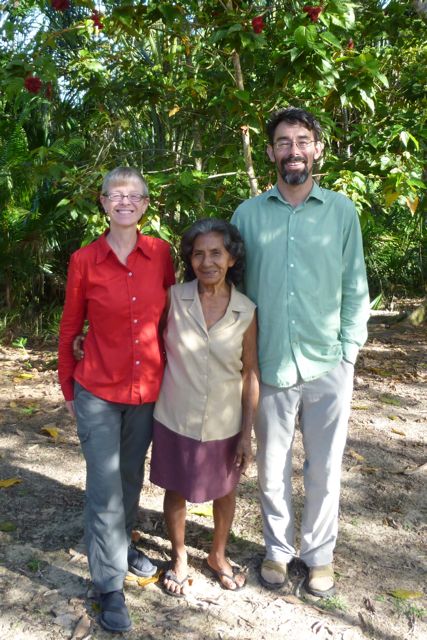 | 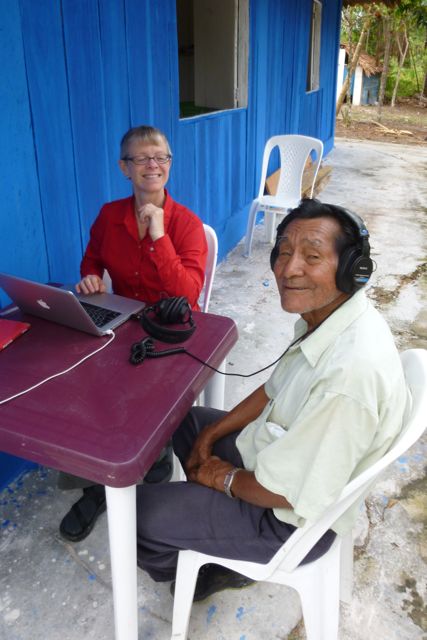 | |
| Chris and Lev with Ema Llona Yareja. | Chris working with Hermenegildo Díaz Cuyasa. |
In July and August, Lev and I returned to the Máíhuna community of Nueva Vida, also in Loreto, Peru, for a six-week visit. The Máíhiki Project was the principal focus of our fieldwork activities between 2010 and 2013. In 2014 we made a shorter visit than usual to Nueva Vida, in order to scale this project back for a little while in light of our focus on the ILDP through 2016. This team-based project, funded primarily by a National Science Foundation grant to Lev Michael through the University of California, Berkeley (Grant #BCS-1065621), is based in Nueva Vida, one of the four Máíhuna communities in Loreto. With about 100 speakers remaining, the language is highly endangered, but over the last decade, the Máíhuna people have made a strong commitment to language documentation and revalorization, and our collaboration with them has been very successful so far.
While we were in Nueva Vida, we provided logistical and financial support for a number of health emergencies, as well as providing some community-level support to offset the damage done to villagers' gardens during a huge flood in June, which was the most severe flood they had seen in twenty years. At the end of our stay, we proudly presented the Máíhuna federation with two primers designed for teaching Máíhiki in the primary schools in the four Máíhuna communities.
As you may recall, a significant piece of the MP between 2011 and 2013 was the training of a team of fluent Máíhiki speakers in the basics of linguistic description, so that they could play a pivotal role in the documentation of their own language. In that light, a major piece of good news for us and the Máíhuna community linguists was the acceptance, in September, of the community linguists' chosen orthography (writing system and alphabet) by the Ministries of Education and Culture as the official orthography of Máíhiki. (By the way, in that orthography, the language name is written: máíjìkì; we use the spelling Máíhiki in English contexts).
On this most recent visit, our time in Nueva Vida overlapped with fieldwork two graduate student researchers, Grace Neveu and Stephanie Farmer, each of whom had worked with us previously on the MP and each of whom were in Nueva Vida in 2014 carrying out their own research projects. As a result, logistics for me and Lev were unusually easy this time around, and yet we were in good company. We hope to make a another short visit to Nueva Vida in the fall of 2015, to keep our connection to the community strong.
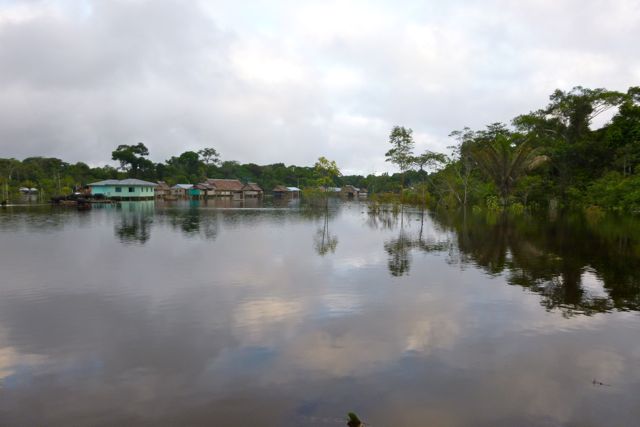 | 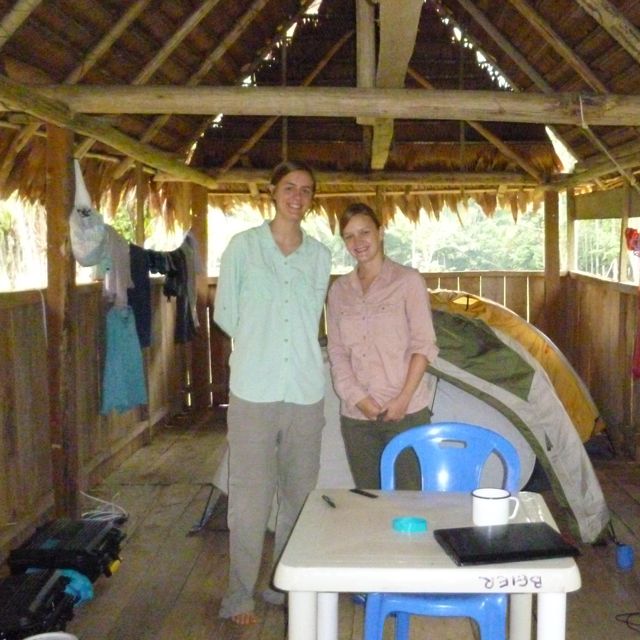 | 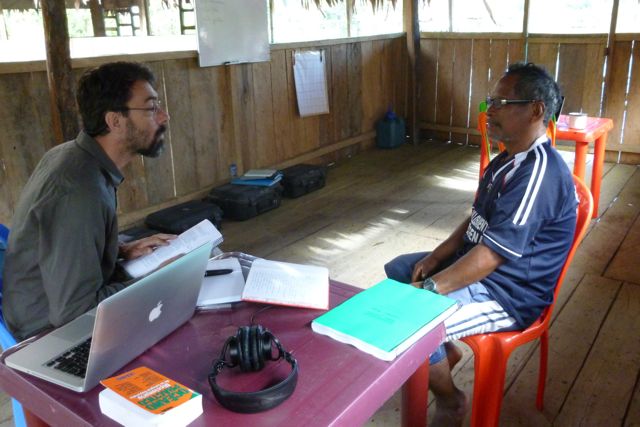 |
| The view from our research center in Nueva Vida in June, during the flood. | Researchers Grace and Steph in Nueva Vida in August. | Lev and Liberato working on the Máíh |
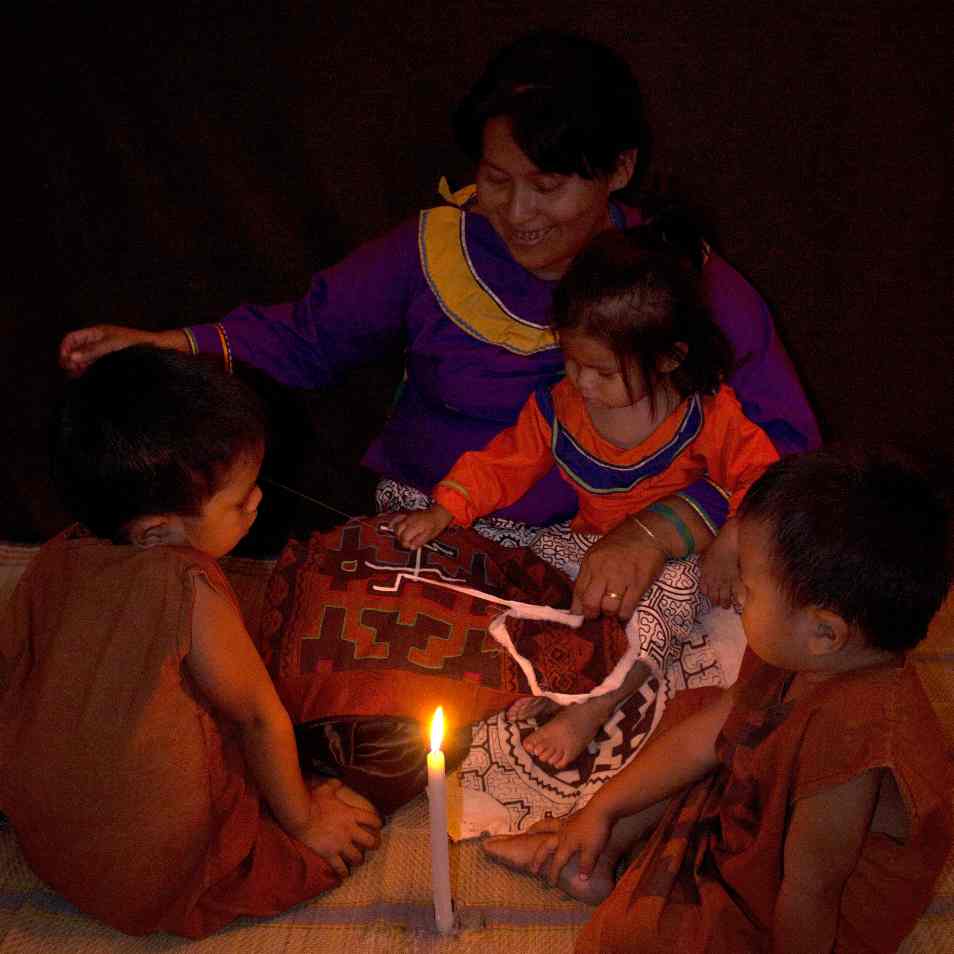 A new collaboration: Kano Nete
A new collaboration: Kano Nete
We are pleased to announce that Cabeceras Aid Project has formalized a collaboration with Kano Nete, an organization founded in January 2014 on the initiative of a group of Shipibo men and women in Peruvian Amazonia, whose goal is to document and promote Shipibo knowledge, culture, and language through collaborative research projects. More information about Kano Nete is available at their webpage: www.cabeceras.org/kanonete.htm
Looking forward to 2015 and 2016
Our fieldwork focus through 2015 and 2016 will be the Iquito Language Documentation Project, which will involve multiple visits to the community of San Antonio, with the goal of publishing our dictionary, text collection, and new pedagogical materials, as well as helping the community move forward with language revalorization and revitalization activities. Concretely, I will be spending the month of February in San Antonio, and then Lev and I will be spending most of our time there from early September through late December, and again from January through August of 2016.
We also hope to make a short visit to Nueva Vida in November, in order to keep our connection to the Máíjùnà people strong. We intend to continue to provide resources for healthcare and emergencies to all of the Máíhuna communities, despite our decreased presence in Nueva Vida over the next two years.
The Nathaniel Gerhart Memorial Scholarship Fund
Again in 2014, the Nathaniel Gerhart Memorial Scholarship program was a top priority for Cabeceras, because right now this is the best opportunity we have to invest in a better future for a large number of indigenous communities in Amazonia. Our Scholarship Fund is currently supporting two bilingual indigenous students in their post-secondary professional studies, both of whom have a vision (and a track record) of serving their own and/or other Amazonian indigenous communities through their professional activities. We are honored to continue supporting Alex Rodríguez Roque, a Bora man studying civil law in Iquitos; and Maribel Kaibi Omenki, a Matsigenka woman studying Nursing in Cusco.
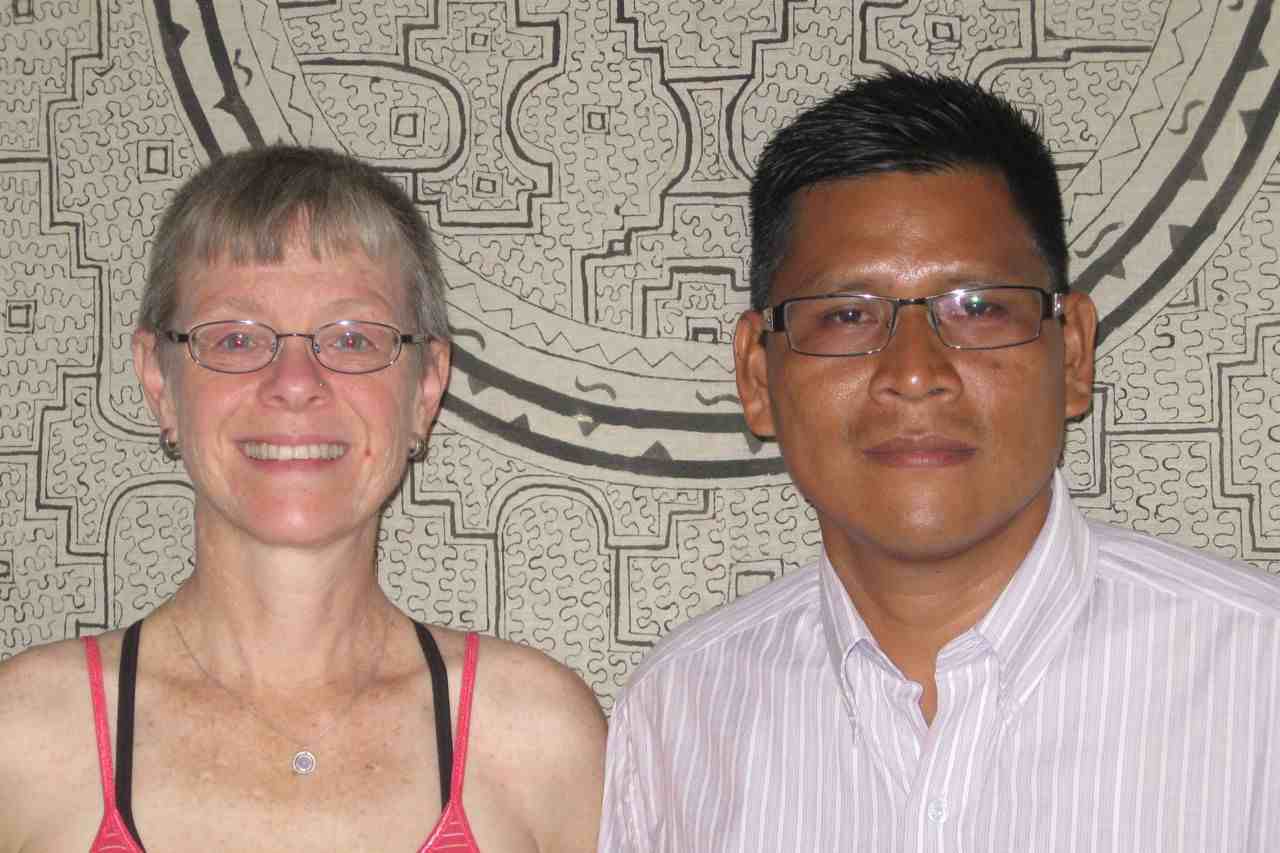 Alex Rodríguez Roque — pictured at right with Chris in Iquitos in June 2013 — is from the Bora community of Pucaurquillo in the Department of Loreto. He finished his coursework in Civil Law and Political Science in 2012 at ULADECH-Iquitos, obtained his Bachelor's degree in 2014, and is now working toward obtaining his professional title of Abogado (lawyer) so that he can begin to practice law in Iquitos. Throughout his studies, Alex has been working as a school teacher to support himself and his family; his scholarship from Cabeceras has only covered his school-related costs. His concrete goal in becoming a lawyer is to be able to work defending and improving the civil rights of indigenous individuals and communities in Loreto. His unflagging dedication, patience, and humility impress me time and again.
Alex Rodríguez Roque — pictured at right with Chris in Iquitos in June 2013 — is from the Bora community of Pucaurquillo in the Department of Loreto. He finished his coursework in Civil Law and Political Science in 2012 at ULADECH-Iquitos, obtained his Bachelor's degree in 2014, and is now working toward obtaining his professional title of Abogado (lawyer) so that he can begin to practice law in Iquitos. Throughout his studies, Alex has been working as a school teacher to support himself and his family; his scholarship from Cabeceras has only covered his school-related costs. His concrete goal in becoming a lawyer is to be able to work defending and improving the civil rights of indigenous individuals and communities in Loreto. His unflagging dedication, patience, and humility impress me time and again.
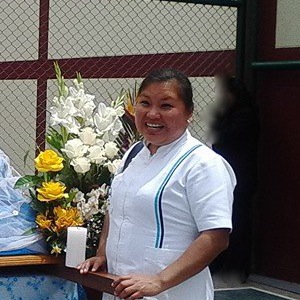 Maribel Kaibi Omenki — pictured at left in Cusco in December — is from the Matsigenka community of Koribeni in the Department of Cusco. She is continuing her coursework in the Nursing program at Universidad Andina in the city of Cusco. Maribel already has a professional title, and several years of work experience, as a 'Nurse Technician', so she is enjoying her Nursing courses as they build on her existing knowledge of healthcare. Because Maribel has already worked providing healthcare in geographically remote and under-served communities, she is well aware of how valuable her additional training will be when she returns to work as a nurse in Matsigenka communities. Like Alex, Maribel is hard-working, patient and humble, and it is an honor to accompany her on this journey through higher education.
Maribel Kaibi Omenki — pictured at left in Cusco in December — is from the Matsigenka community of Koribeni in the Department of Cusco. She is continuing her coursework in the Nursing program at Universidad Andina in the city of Cusco. Maribel already has a professional title, and several years of work experience, as a 'Nurse Technician', so she is enjoying her Nursing courses as they build on her existing knowledge of healthcare. Because Maribel has already worked providing healthcare in geographically remote and under-served communities, she is well aware of how valuable her additional training will be when she returns to work as a nurse in Matsigenka communities. Like Alex, Maribel is hard-working, patient and humble, and it is an honor to accompany her on this journey through higher education.
Although the monetary costs of higher education in Peru are in general much lower than in the United States, the complex social, economic, and logistical factors that indigenous students face are insurmountable for most individuals. Therefore, in addition to providing financial support, Cabeceras is providing personal mentorship to our awardees, so that they have reliable, unwavering social and moral support when they face the different kinds of challenges that arise as they continue their formal education. This means, among other things, that I maintain regular contact with our awardees through email, chat, and Skype; I provide practical guidance and skill-building regarding money and time management; I offer suggestions regarding the intricacies of university life and urban living; and I can generally be counted on to provide encouragement and a fresh point-of-view as often as necessary. Just as much as we expect a good-faith commitment from our awardees, we have made a multi-faceted commitment to them, to help each individual find his or her own path to success.
In light of the sizeable multi-year commitment that the scholarship program requires of Cabeceras, I would like to express special thanks to the Nathaniel Gerhart Memorial Fund in New York, and to Margo Minogue-Heyl and Bob Heyl in Houston, for their on-going substantial support of the scholarship fund; and to Margo Minogue-Heyl for her indispensible administrative assistance!
Gratitude to board members Joel Dippold and Margo Minogue-Heyl for bringing in new support this year!
Two of our board members literally went some extra miles for Cabeceras this year, when they raised money for organization through their participation in special fundraising events. First, on September 27th, Joel Dippold participated in the daunting "Mountain Lakes 100" — a 100-mile run between Mt. Jefferson and Mt. Hood in Oregon — and asked his network of friends and family to make a donation to Cabeceras in honor of his race. Then, on November 8th, Margo Minogue-Heyl and Bob Heyl completed a 10K Walkathon to raise funds for Cabeceras through their networks of friends and family. Much gratitude to Joel, Margo, and Bob for their heroic efforts!
A brief summary of Cabeceras' work and purpose
Since 1996, Cabeceras' fieldworkers have worked with, or on behalf of, Nanti, Iquito, Matsigenka, Máíhuna, Omagua, Muniche, Mashco Piro, Katsakáti, A'iwa, and Sápara people and/or communities, through our humanitarian aid and research projects. We have taken on various types of field projects over the years, ranging from digging latrines and donating medical supplies to writing dictionaries and training community linguists. All of these activities have been rooted in Cabeceras' core mission to support activities and individuals that show promise for improving the social and physical health, fostering the cultural and linguistic survival, and generally nurturing the well-being and dignity, of small, under-served indigenous communities in Peruvian Amazonia.
Thank you so much for your ongoing support!
| Gracias! (Spanish) | Cabeceras Aid Project |
| Dèìrá jà! (Máíh | 5859 Braesheather Drive |
| Kameti! (Nanti) | Houston TX, 77096-3933 |
| Kametitake! (Matsigenka) | Our Tax ID number is 74-2799387. |
| Jaári t | |
| W | |
| Yuse! (Muniche) |
Back to top
 Last updated: January 18, 2015
Last updated: January 18, 2015